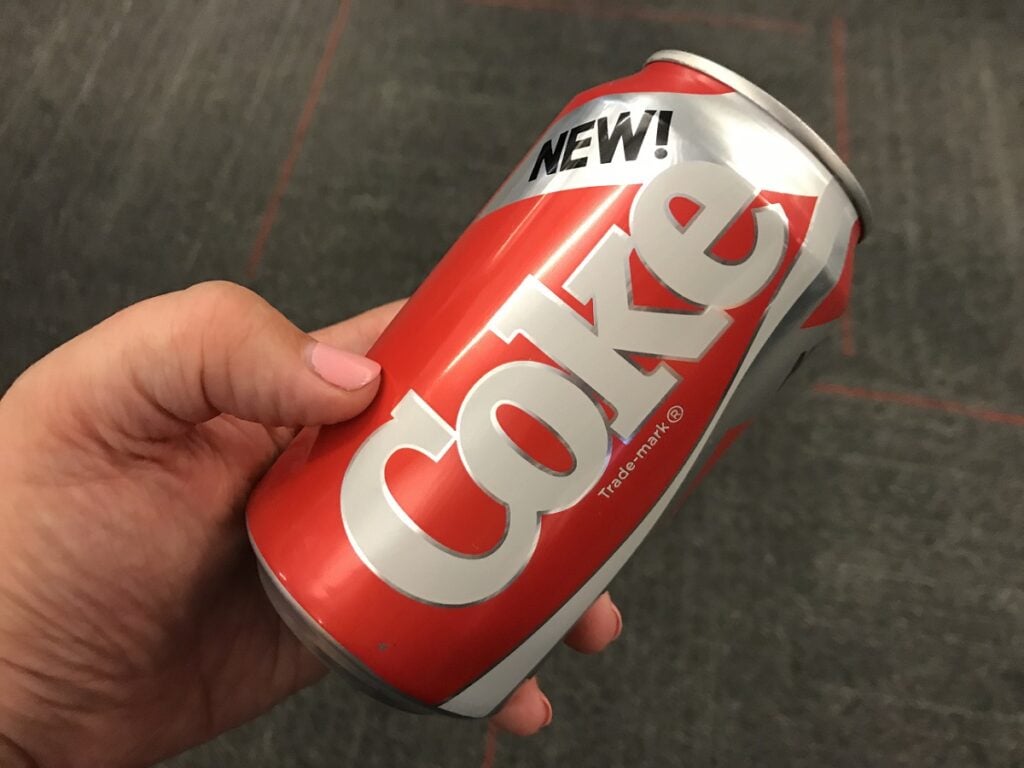The Pepsi Challenge, a blind taste test that pitted Coca-Cola and Pepsi against each other, proved that most people preferred Pepsi. With their long-spanning competition, Coca-Cola released a new recipe of Coke to gain the majority’s interest, a sweeter and lighter version called New Coke.
As a desperate measure to redeem themselves from the Pepsi Challenge, Coca-Cola released New Coke, the first change made to a 100-year-old recipe, angering many Coca-Cola fans.
The Pepsi Challenge That Provoked Coke
The Pepsi Challenge indubitably caused the birth of New Coke, an altered Coca-Cola recipe released in 1985 that led to a fiasco. In the 1980s Pepsi Challenge, two separate glasses contained Coca-Cola and Pepsi, and people had to pick their preferred choice of drink without knowing the brand.
The Pepsi Challenge sparked the Cola War, as Coca-Cola had finally met its match. And although Pepsi and Coca-Cola have been long-time competitors ever since 1899, the Pepsi Challenge established a turning point as it had factual evidence that the majority favored Pepsi. In response, Coca-Cola launched a new version of Coke entitled New Coke, a disaster in a Coca-Cola can. (Source: Vox)
The story of New Coke is widely recalled, but the context is often forgotten. In 1985, The Coca-Cola Company’s share lead over its chief competitor, in its flagship market, with its flagship product, had been slowly slipping for 15 consecutive years. The cola category in general was lethargic. Consumer preference for Coca-Cola was dipping, as was consumer awareness.
The Coca-Cola Company
(Source: The Coca-Cola Company)
The Infamous New Coke and the Classic’s Return
On April 23, 1895, Coca-Cola announced the New Coke in a New York City press conference, revealing the iconic drink’s new recipe. The announcement of the New Coke marked the first change Coca-Cola made to their nearly 100 years old recipe. (Source: Time)
A blind taste test wherein nearly 200,000 individuals preferred the new recipe solidified Coca-Cola’s release of New Coke. And although New Coke‘s blind taste test appeared successful, its launch caused an outrage.
Protest groups — such as the Society for the Preservation of the Real Thing and Old Cola Drinkers of America (which claimed to have recruited 100,000 in a drive to bring back “old” Coke) — popped up around the country. Songs were written to honor the old taste. Protesters at a Coca-Cola event in downtown Atlanta in May carried signs with We Want the Real Thing and Our Children Will Never Know Refreshment.
The Coca-Cola Company
(Source: The Coca-Cola Company)
The successful blind taste test didn’t reflect the people’s developing hatred towards the New Coke as taste tests had almost no correlation to how individuals consumed Coke in real life. Expert Malcolm Gladwell explains that the New Coke was preferred in small quantities, in contrast to full cans or two-litter bottles. (Source: Vox)
The Coca-Cola Company continued to receive 1,500 calls daily on its consumer hotline, and more and more people blamed Coca-Cola employees personally for the change in the recipe. And soon, in July 1895, Coca-Cola brought back the original recipe.
The return of the old Coca-Cola became massive news, landing in newscasts and as a front-page in every newspaper with a wide circulation. (Source: The Coca-Cola Company)
